Slip length in sheared liquid films subject to mixed
boundary conditions
Nikolai V. Priezjev, Anton A. Darhuber and Sandra M. Troian,
Phys. Rev. E 71, 041608 (2005)
Fluid flow in confined geometries can be significantly affected by slip at the liquid/solid
interface. The measure of slip is the so-called slip length, which is defined as an extrapolated
distance relative to the wall where the tangential velocity component vanishes (see picture below).
Factors that affect slip length include weak wall fluid attraction, surface roughness, high shear rates
and nucleation of nanobubbles at hydrophobic surfaces.
Molecular dynamics simulations provide
a powerful tool for studying the effect of these parameters on boundary conditions at the molecular level.
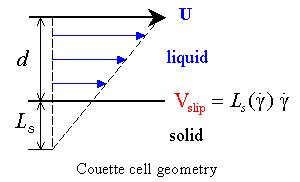
As discussed in our
paper,
we investigated the behavior of the slip length in simple fluids subject to planar shear bounded by
substrates with mixed boundary conditions. This study was inspired by recent experiments which suggest
a possible presence of flat nanobubbles or dissolved gas at the liquid/solid interface. A significant
drag reduction could be achieved because of no-shear stress (infinite slip) regions at the liquid/gas interface.
We mimic this situation by considering a shear flow past a surface which is patterned with an infinite
array of stripes representing alternating regions of no-shear and finite slip, see picture below.
The question we try to answer is how the slip length depends on the distribution of non-wetting regions?

In this work the fluid was subject to steady planar shear by translating the upper homogeneous wall
at a constant velocity U, while the lower, patterned wall remained stationary, see picture below.
We reduced the attractive part of Lennard-Jones potential
for fluid-wall interactions to simulate non-wetting (white) stripes.
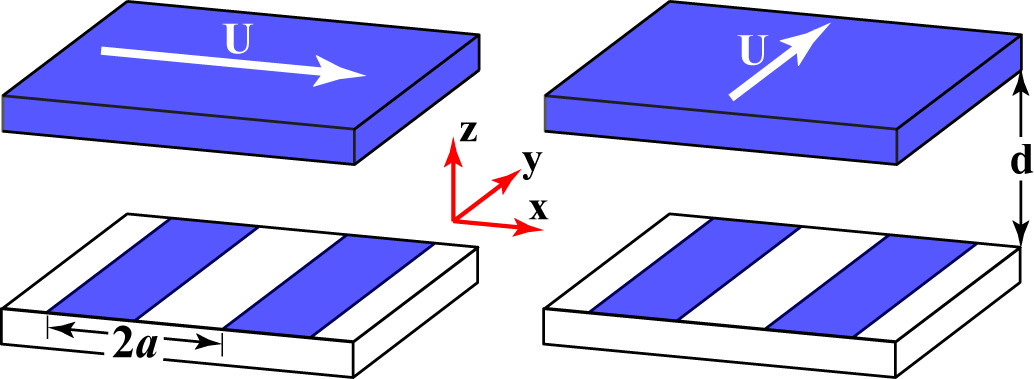
In this movie we consider shear flow past a surface with
a stripe width of about 6s, where s
is the molecular diameter characterizing the Lennard-Jones interaction.
Note the enhanced layering near the wetting patches and reduced fluid density above the non-wetting regions.
When the stripe width is of order of molecular diameter, the alternating wall potential represents effectively
a rough surface. These molecular scale corrugations created by the composite wall potential strongly
reduces the effective slip length in the transverse flow orientation, leading eventually to a no-slip boundary
condition at approximately a~s.
(see ppt slides for more details).
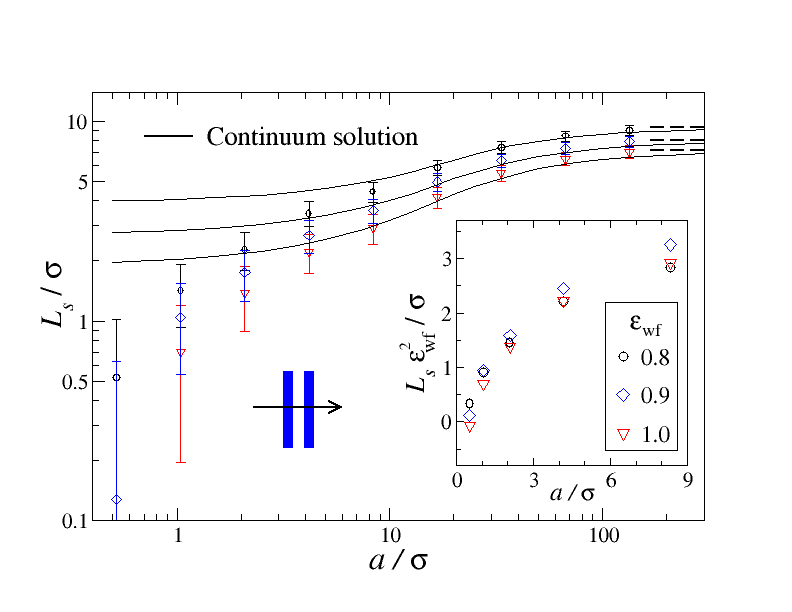
The difference in the contact densities and relative velocities above the wetting and non-wetting patches produces
significant oscillations in the averaged velocity profiles for large stripe widths. We found that effective slip
length increases monotonically with stripe period to a saturation value for both parallel and transverse flow
orientations. A detailed comparison
between the results of the hydrodynamic calculations and molecular dynamics simulations shows excellent agreement
when the length scale of the substrate pattern geometry is roughly larger than ten molecular diameters.
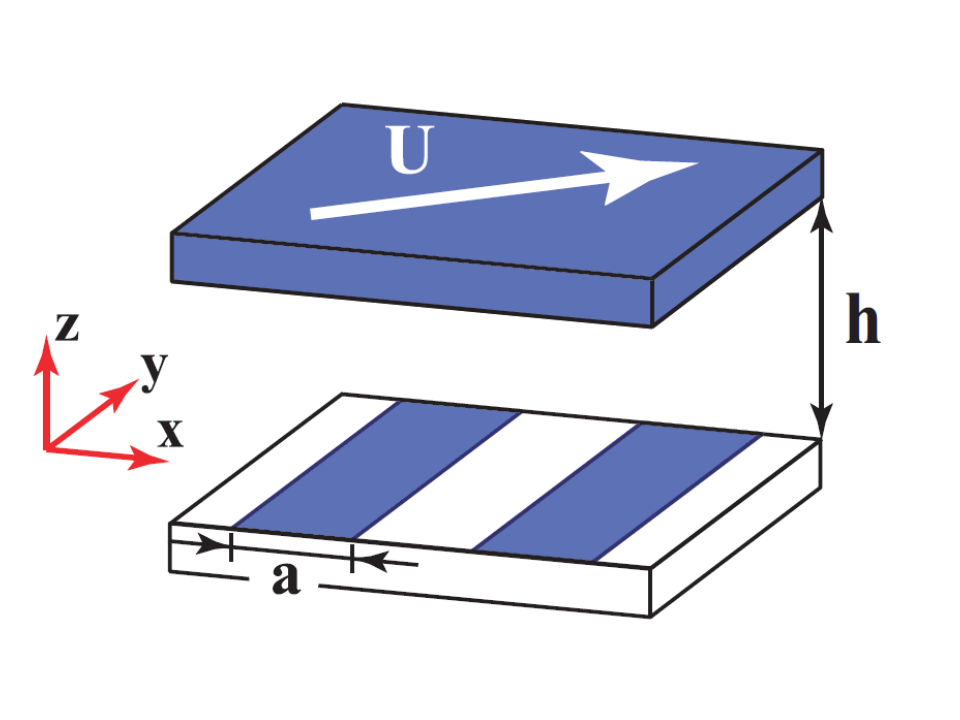
In a related study,
we have investigated a more general situation when the mean flow direction is not aligned with the symmetry
axis of a patterned substrate and the apparent slip velocity acquires a non-zero transverse component (see picture above).
It was found that the angular dependence of the effective slip length obtained from MD simulations is in
good agreement with hydrodynamic predictions provided that the stripe width is larger than several molecular diameters.
(presentation at the 2011 DFD meeting).
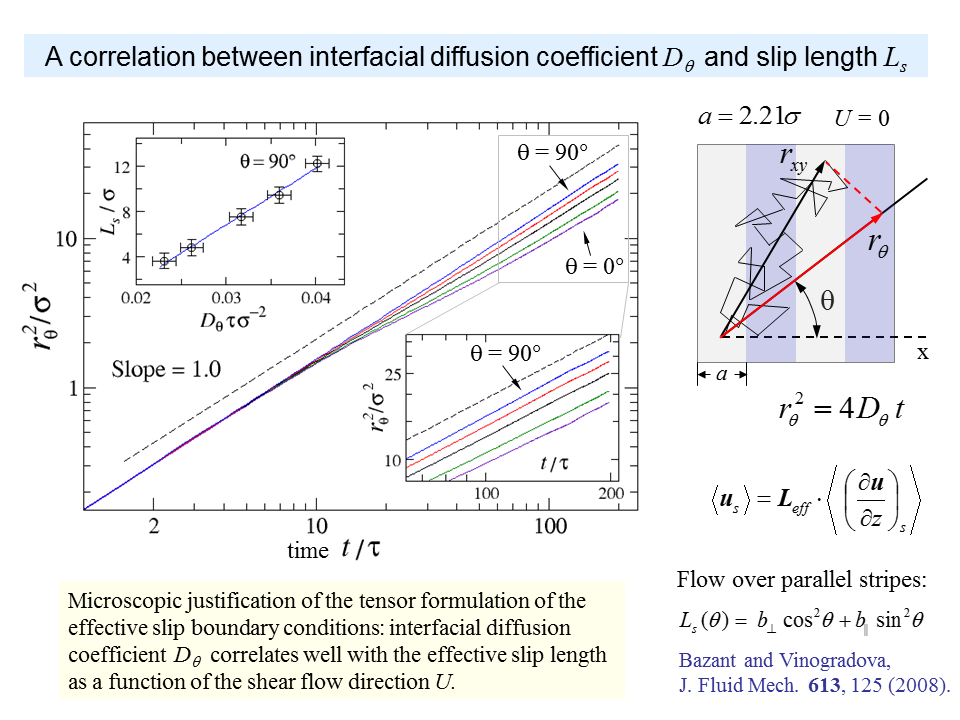
Perhaps most interestingly, we find that the directional diffusion coefficient of fluid molecules in contact with
patterned substrate correlates well with the effective slip length as a function of the shear flow orientation
(see figure above). These findings lend support for the microscopic justification of the tensor formulation of
the effective slip boundary conditions for noninertial flows of Newtonian fluids over smooth surfaces with nanoscale
anisotropic textures.
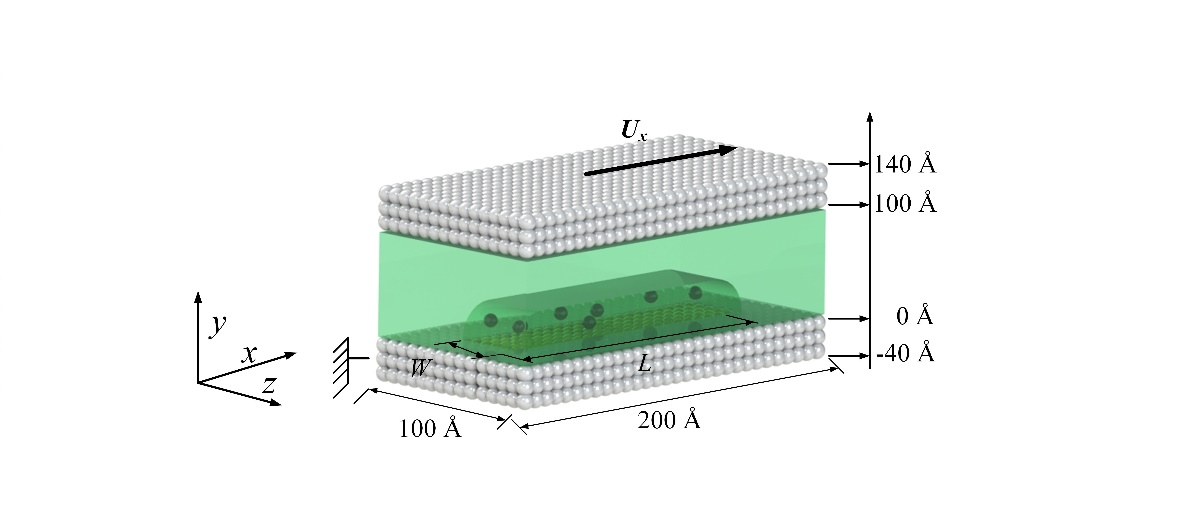
In a recent MD study,
a more realistic situation was considered where a liquid flow is induced over a trapped nanobubble (see figure above).
First, it was demonstrated that the contact line at the gas-liquid interface can be pinned by the wettability
contrast even on atomically smooth substrate. We then numerically investigated slip flows over smooth surfaces with
flattened gas nanobubbles. It was found that the local slip length is relatively large at the gas-liquid interface
and its spatial distribution becomes asymmetric due to shear-induced deformation of the attached nanobubble, while the
effective slip length remains nearly constant. Furthermore, with increasing gas areal fraction, the local and
effective slip lengths become larger, especially in the case of a stripe-like continuous gas-liquid interface where
the interface curvature in the flow direction is absent. It can be inferred from our results that the gas-liquid
interface will promote the effective slip and result in apparent drag reduction.
The most recent study
on the local slip length and flow fields over nanostructured superhydrophobic surfaces.
Molecular dynamics simulations described in these studies were conducted using
LAMMPS numerical code.
Back to Nikolai Priezjev's page







